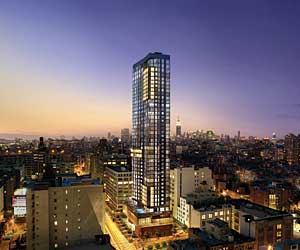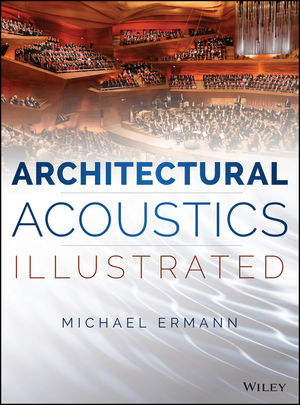The form of the city rises from the convergence of legislation, imagination, ambition, and resistance. This complex of forces is getting a workout a few blocks from my office in Lower Manhattan, where Donald Trump and partners are building the Trump SoHo, a 45-story “condominium hotel” containing 400 apartments—ranging in size from 425 to 10,000 square feet—priced at $3,000 a square foot and said to be selling briskly. The tower, which is going up fast and is scheduled to open in spring 2009, sits adjacent to SoHo and will be, by far, the tallest building in an area characterized by structures of six to 15 stories. Like most Trump projects, the architecture, by Handel Architects, is merely bland, another glass box. Because of its size, however, it whimsically rescales the entire neighborhood, permanently marring the low roofscape that stretches downtown and culminates in the Lower Manhattan skyline. It’s a view I take in every morning as I walk to work, and the new tower already constitutes an awful scar on the sky. As urbanism, it’s vandalism.

The controversy that surrounds the building, however, focuses on questions that exceed size. Use is the real issue: The hotel-condominium bifurcation is Trump’s strategy for building a residential structure in a neighborhood zoned for manufacturing, the last such district in Lower Manhattan. Although this zoning category does not permit residential structures, it does allow conventional hotels, which the code describes as facilities where units “are rented on a daily basis” and used “primarily for transient occupancy.” The condo hotel is a relatively new real estate product, introduced to New York in recent years and, to date, only in areas with residential zoning. It’s clear, though, that the zoning code was written well before any of its framers could possibly have imagined this particular bending of the idea of a “transient hotel.”
Because of this lack of specificity and obvious precedent, Trump has needed to finesse the nature of the project’s occupancy, to create a standard of transience. According to the deal struck between him and the city (via a “restrictive declaration” now described as “voluntary”), although the tower is clearly an apartment building—that is, a building filled with units that in every way resemble apartments, with kitchens, baths, bedrooms, and the rest—individual owners will be permitted to occupy their apartments a maximum of 120 days a year and no more than 29 out of any consecutive 36 days. There appears, however, to be no obligation to rent when vacant, although there will certainly be strong financial inducements to do so.
Despite gales of criticism from activist groups (who recently staged a demonstration at the construction site) and the discovery during excavation of a cemetery from a pioneering abolitionist church that once occupied the site, the project has moved ahead at breakneck speed. Recently, if tardily, a consortium of community organizations has announced a lawsuit against the city for permitting the project. The city has promised to defend it, arousing further outcry about the use of taxpayer money to pull Trump’s chestnuts out of the legal fire.
The suit’s claim will undoubtedly focus both on the appropriateness of the building—which will be a tough battle against arguments that it is, thanks to the loophole, technically “as of right”—and, perhaps more promisingly, on Trump’s claim that it is actually going to be a hotel. Here the issue devolves on whether what walks, flies, and quacks like a (residential) duck is actually another species. Trump has advertised the units as “residences” (there has been much back-and-forthing about advertising that crosses this line), and the legal confrontation will surely fix on the semantic technicalities of the meaning of “transience.” To be sure, the jet-set masters of the universe who buy into the property are an extremely transient class, but this certainly can’t have been what the framers of the code had in mind when they distinguished “residential” hotels (not permitted) from “transient” ones (allowed).



Post a comment to this article
Report Abusive Comment